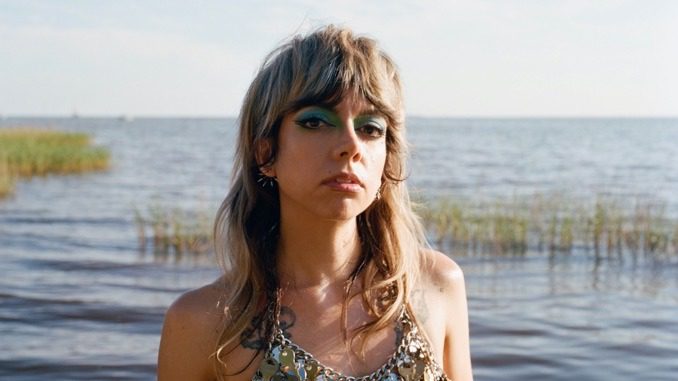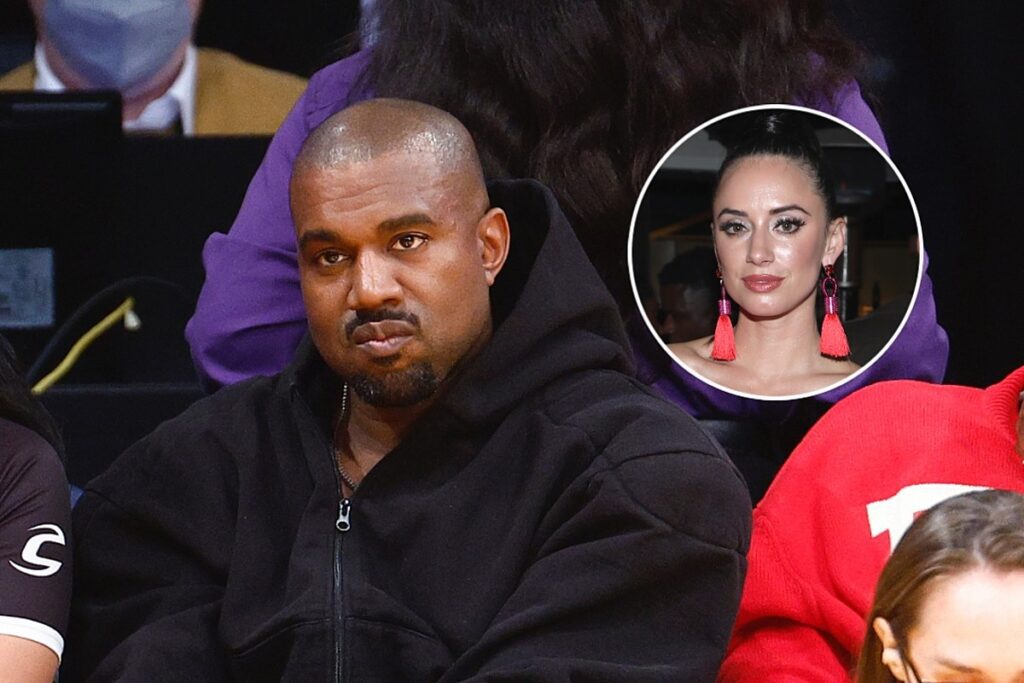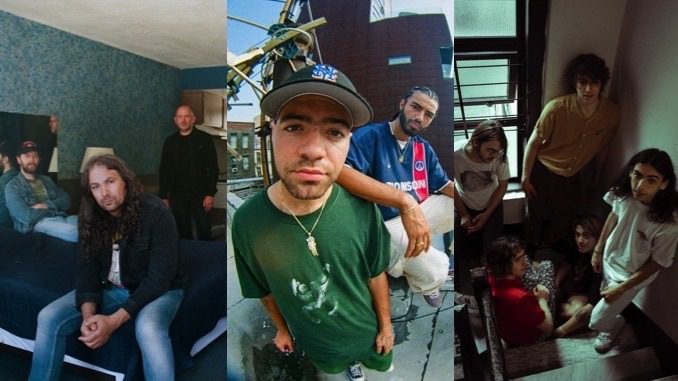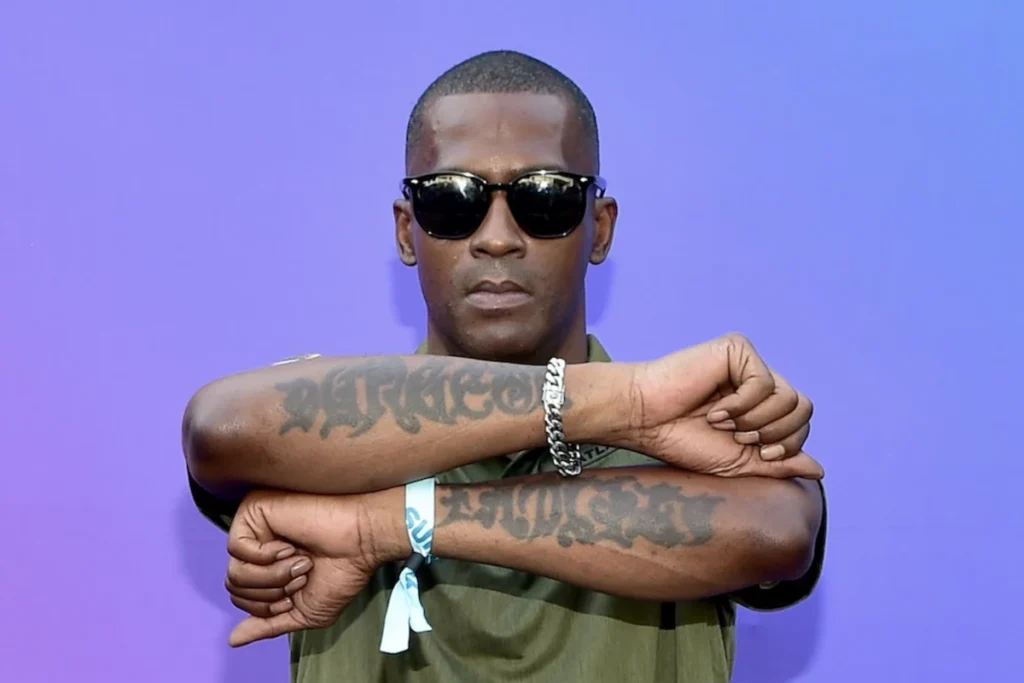You don’t have to be a neophyte Nostradamus to scan through contemporary news headlines and read the grim writing on the wall. Climate change and its attendant droughts, floods, wildfires, tornadoes, hurricanes and coastal erosion, all of it ignored by an entire political party in America. Said faction’s conversely laser-beamed focus on methodically eradicating the reproductive rights of women, the inherent rights of voters of color, plus the gerrymandered expansion of The Big Stolen-Election Lie, which will now include winning at any cost in the name of Trump-playbook ethnic nationalism (now on the rise in Sweden, France, Germany, Brazil and Hungary, as well as here), even if your candidate has officially lost. Throw in the return of book banning (Maus? Really?), an anti-science Ottawa truckers blockade, the defiant brinksmanship of Russia encircling the Ukraine, and even a nation/culture-destroying Taliban takeover of Afghanistan, and it’s no hidden secret. We’ve learned absolutely nothing from the past two pandemic years. And things are about to get dark for humanity. Irreversibly, extinction-level dark.
Alynda Segarra—as the brainy bandleader for punk-powered, folk-schooled outfit Hurray for the Riff Raff——didn’t intend to pen a guidebook for these times that try human souls with her latest album, Life on Earth. But she’s happy if listeners happen to hear it that way. She knows it can currently seem fairly overwhelming. At a time when we should all be united against two universal scourges—the coronavirus, framed against a larger, more dire backdrop of accelerated global warming—algorithmic-targeted social-media dis- and misinformation has bred nothing but ignorance, skepticism and downright denial of our own pending apocalypse, perfectly summarized in Adam McKay’s laugh-’til-you-cry allegorical masterpiece Don’t Look Up. But whereas the Anchorman director (whose Ron Burgundy character first posed the problem in that flick’s snarky sequel, when he mused, “Why don’t we give people the news they want, not the news they need?”) intended his new pending-comet-collision-with-a-dumbly-disbelieving-Earth satire as an urgent climate-change wake-up call, Segarra’s Life on Earth treatise urges those of flagging faith not to give up on humankind, despite all evidence to the contrary. And she bases her optimistic argument on solid sources, like the adaptability to change displayed by Octavia Butler’s science fiction protagonists; Emergent Strategy by adrienne maree brown; and a Thoreau-retro respect for nature, the same wisdom that still guides most surviving indigenous peoples. She’s christened her new anthemic activist sound “nature punk.”
In fact, underscored by Segarra’s clever, pop-savvy songwriting, the whole Life on Earth effect is almost Transcendentalist-placid and reassuring, from the regal opening march “Wolves” to the synth-sugary single “Pierced Arrows,” an organ-buoyed jangler called “Pointed at the Sun” and a punk-meets-acoustic-folk “Rhododendron.” The twinkly hooks of “Jupiter’s Dance” embellish an exploration of planetary cycles and a lunar pull, while “Precious Cargo” paints a gray dystopian landscape with bright, shimmery colors, and “Saga” and “Rosemary Tears” are such rousing synth-rock anthems, you feel spiritually uplifted after just one listen. There’s a hushed 48-second recording of an actual mighty oak in Segarra’s native New Orleans that an enterprising fellow artist adorned with chimes. “And when you go there on a windy day, it’s just making the most beautiful music,” she says. “So the tree has been turned into a musician.”
Raised by her aunt and uncle in the Bronx, the Puerto Rican-descended malcontent left New York at 17 and began criss-crossing America by Woody Guthrie-rustic rail, eventually forming a hobo band in 2007 with her fellow drifters, The Dead Man Street Orchestra, which lasted for two years, led into two indie solo albums, then an eponymous 2011 debut as Hurray for the Riff Raff. With each successive set, Segarra—who had settled in New Orleans—ventured further from her initial folk confines, until she careened into the adventurous 2017 experiment The Navigator, wherein she sonically explored her own rich Nuyorican heritage. She wanted to really test her limits with the Brad Cook-produced Life on Earth, HFTRR’s eighth, but the pandemic put a few kinks in her plans. “But I really have worked so hard on it, and that’s why it’s taken me so long to put out another album,” she sighs, relieved it’s finally being released today, Feb. 18. “I didn’t want to put one out until I felt like I really pushed myself and grew, as uncomfortable and scary as it was.”
Paste: So you have seen Don’t Look Up, of course?
Alynda Segarra: I have. And it’s pretty incredible. I kept thinking of Idiocracy, and how it’s like Part Two. I actually saw it on New Year’s Eve, because the [Omicron] virus was spreading so much here in New Orleans, so of course, I wasn’t gonna go anywhere. So I decided that that would be a good way to start the new year. And I was particularly struck by Ariana Grande, as well—I thought that she did a really great job, and Kid Cudi, too. It was that weird thing where you’re watching something, and you realize that you’re not alone in your thinking. Like, often I find that I’ll be talking to a friend, and they’ll be like, “No, but this couldn’t possibly happen!” Or, “So and so couldn’t possibly win that election—they’re so stupid!” But stupidity is really violent and very powerful, so it’s that weird thing where you’re like, “Well, at least I’m not alone! I’m not the only person who’s seeing this happen!” But it also is this dreadful feeling of, “Wow. It’s happening. And it will probably continue to happen.” Like [the Don’t Look Up ultra-rich] planning on leaving the planet, instead of trying to save the planet, you know?
Paste: It’s really odd that both U.S. political parties are already making election plans, under the assumption that Roe v. Wade will be overturned in June. Help, Alynda! This can’t be happening!
Segarra: Ha! I mean, I need help, too! That’s what a lot of this album was about. I’m in a place where I don’t know how I can fix this by myself. And I think a lot of artists are in that place of, “We don’t know what to do besides ring the alarm bell.” And Don’t Look Up is such a great example of, sometimes you ring the alarm bell, but what do you do when people don’t hear it? Or they hear it, but they’d rather not think about it? So I feel like what I’ve learned, living in New Orleans and experiencing hurricanes and devastation in that way, is that community is really the only way we can move forward. Trump is just not going away, obviously, so I’m really focusing on, how do we have real community? How do we take care of each other in the wake of devastation? What do we do? It’s very hard now, because I feel like we’re so separated because we’re afraid of getting sick. But there are ways that we can check in with each other. There are ways that we can build community. And we’re gonna have to do it while our elected officials fight amongst each other and just destroy everything. We are gonna have to do that work, you know? That’s a lot of what my art is about now—talking to people about how we can envision some kind of future together. And I hate to say it, but I think a lot of people relate to the fact that I’ve lost any kind of faith in these elected officials. So how do I work as an artist and talk directly to people?
Paste: Your song “nightqueen” is all lowercase. Is that referencing adrienne maree brown?
Segarra: Well, I decided to lowercase that because I feel like that is a bit of going into the underworld—I felt like that was the one song where it felt like we were going into an alternate realm of reality, and it really leaned into my connection with my ancestors. I’ve really learned into connections with beings that experience time differently than we do. When it comes to the trees in New Orleans, they’re definitely experiencing time differently than we are. That was the reason I chose that, but also adrienne maree brown uses lowercase to honor [feminist author] bell hooks, who just passed away, and who taught me so much, also.
Paste: Not to oversimplify her philosophy, but brown stresses three things for humanity’s survival—collaboration is cornerstone; embracing change is non-negotiable; and we must let go of the status quo. Which is where science fiction comes in—it allows us to imagine the planet’s future needs, right?
Segarra: Yes. Like with Octavia Butler. And I have learned so much from the writing of brown, and I felt like it was my responsibility as an artist—my job, really—to face the horrifying truth, and to face the terrifying future, and to say, “You know what? I’m gonna buckle up and I’m not gonna pretend that this isn’t happening, and I’m not gonna give anybody some tentative false hopes that this isn’t happening, and that everything’s gonna be cozy. I’m gonna embrace change and know that change is a constant. I’m gonna try and learn from nature, from the nature around me, and be humbled.” Humans really don’t know what the fuck we’re doing—all we know how to do right now is destroy this beautiful planet that we have. So I feel like brown’s writing is just this really welcomed hand to lead us into the mysterious.
Paste: She also refuses to give into despair, which can’t be easy.
Segarra: Yes. Or also into giving a cozy answer that says, “Awww … things are gonna be okay!” And this idea is very hard, especially for Americans—to understand giving up the status quo. That is really hard for us. I mean, it’s really hard for me. I live in a city where, with the last hurricane we got, we almost lost power for an entire 30 days. We just didn’t have any power, and that was really an awakening for me, like, “Yeah—shit’s changing.” You know? And I don’t remember that as a kid growing up in New York City. We never lost power, that was just something that we always had. So it’s really interesting to grow into this new present.
Paste: I read a great possible-near-future book during the pandemic—Tender is the Flesh by Agustina Bazterrica. It imagines a world where all livestock succumb to a fatal disease, so there is no more meat. But people still crave meat.
Segarra: Let me guess! They become cannibals? I’m ordering it now! But from nature, I definitely learned how to sit with some very uncomfortable feelings. I guess I learned how to sit with fear, and try and face that overwhelming fear that I stored in my body that I think a lot of us do. And it, of course, came from being stuck in one place and not being able to be continually on the move. And also from not being able to be around other humans. So all of a sudden I couldn’t tap into community during lockdown. I couldn’t do my normal, “Oh, I’m on a plane, I’m in a band, and I’m going somewhere,” to constantly work and be on the move. And I’m sitting here with a tree that has been alive during so many different disasters, during so many different chaotic times in the city’s history. It’s an oak, one in particular that became what I call my friend, in City Park in New Orleans. So I learned a lot about sitting still, about facing a lot of fear, and saying, “I’m gonna somehow survive this!” Because I have to, you know?
Paste: Remember how scary Covid was in the beginning? Everybody I know had a go-bag, just in case we had to head for the post-lockdown hills.
Segarra: Oh, it was terrifying! I was feeling a lot of fear. Fear for my family, of course—my dad is in the Bronx. And I remember the first moment of seeing people standing in line, six feet apart, with their masks on—that was the very first day. And every day when I woke up, it felt like I had to re-download all of the new information. Getting used to this new reality, every day I felt like I had to teach myself, “This is what happened. It’s real, and these are the new rules.” And then I’d remember the days that I didn’t have to do that, and that was also scary, you know?
Paste: What is the song “Saga” about, exactly?
Segarra: It’s about getting over trauma, and getting to a place where I don’t identify anymore with this idea of being a survivor. It’s more me saying, “I’m an adventurer.” It’s about younger relationships that I had that were very toxic and abusive, and trying to speak to people that are in the thick of healing from that. And I’m talking about this whole chapter of your life that can open up, and how it doesn’t have to become this defining moment in your life that defines who you are. You can be defined more by your adventures and your successes and your joy instead. That’s another thing I learned during these strange two years.
Paste: It’s interesting that video director Lucia Honey incorporated train yards into your “Pierced Arrows” video. You must know them quite well, since you traveled by rail, hobo-style for many years. You even came out here to San Francisco by train, as I recall.
Segarra: Yes, of course. And I slept in Golden Gate Park and Buena Vista Park, and spent a lot of my early years just escaping and being on the move, and trains were just the ultimate escape to me. You got to escape society completely and live on the outskirts, you know? And even as a kid, I felt like, “This whole plan that we have is crazy, and it does not make sense to me, and I opt out.” And then I got a little older and decided, “I’m gonna try and re-emerge and work with my art in the midst of all this.” And I did a lot of thinking about being that young kid, and I was like, “You weren’t wrong!” But now we can’t run away anymore.
Paste: Back then, you were running from something. But in “Pierced Arrows,” you’re “running for the blue.”
Segarra: Yeah. Some kind of clarity. Or some kind of peace, for sure. I was always searching for a family, I was always searching for a sense of community for like-minded people, and for some kind of past that would bring me to an inner peace or some kind of joy. And of course, riding trains is what brought me to playing music, and to writing, and that’s a lot of what “Pierced Arrows” is about. And also this idea that my experience of memory just got so wonky during lockdown that it felt like things that had happened so long ago had just happened, and things that happened shortly before had actually happened a long time ago.
Paste: Visually, in the video and album art, you’re tapping into a post-apocalyptic Tank Girl, Lori Petty look.
Segarra: Of course! Lori Petty! Who is incredible in Station Eleven, by the way! So yeah, I really loved the album cover—I feel like a lot came together during that photo shoot. And especially with that outfit, and just this idea of making clothes out of reusable material, something that we might just throw away, like these old keys. And also, keys are just so rich in what they symbolize to us. They symbolize home, or maybe it’s homes that we’ve lost, and also just like being a key between worlds, or to my ancestors who have passed on. Sometimes I feel like I’m this strange messenger in between worlds, the living and those who are no longer with us.
Paste: What’s the significance of the “Rhododendron”?
Segarra: Well, they’re huge here in New Orleans. And I just really was spoken to by them. Sometimes I have these little bursts of inspiration, and I’m not really sure what they mean at the moment, so I just kind of follow the thread. But rhododendrons really started a little world-traveling journey with all sorts of other plant names that started coming to me.
Paste: Two quick final questions: What did you think of In the Heights, set around where you grew up? And what’s your take on the all-inclusive Latinx terminology?
Segarra: I actually didn’t see In the Heights! Does that make me a bad Puerto Rican? But also this idea that I guess there’s Latina versus Latinx? I mean, these types of conversations I often opt out of—I let everybody fight amongst themselves and I just say, “Whatever you guys decide on, let me know!” You know?




